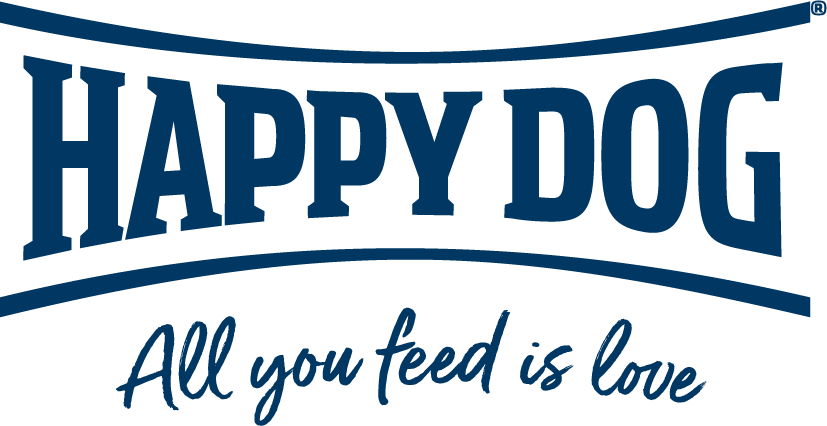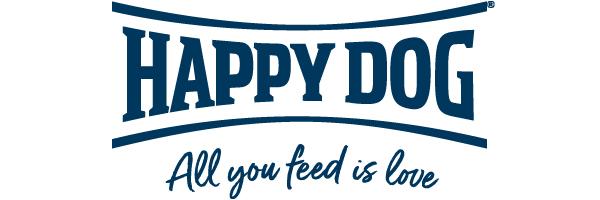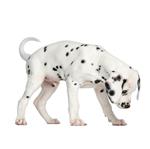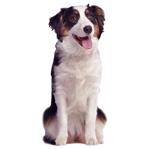There are many different approaches you can take to feeding your dog, however, there are a few rules that you should always follow. The diet should always be easily digestible, produce firm formed stools and your dog should have access to fresh water at all times. If you decide to change your dog’s diet, this should always be done very gradually over at least five to seven days. Happy Dog vet, Carina Mederle, talks about the different methods of feeding dogs and the positives and negatives associated with each one.
Complete Foods are the Safest Options for Dogs
A high-quality, optimally balanced complete food – be it dry or wet – is by far the safest option as all the components are contained in a balanced amount. Ideally the type and quantity of the basic foods chosen should take into account the actual needs of the dog – its age, level of activity and any particular health requirements. Owners intending to feed their dog regularly on home-prepared rations (either raw or cooked) are advised to draw up a ration schedule together with an expert (on nutrition specialised vet) to ensure that the dog´s food contains the optimum number of necessary nutrients. If a complete feed is given most of the time, it is in most cases no harm in also offering the occasional home-prepared meal.
Mixed Feeding
Mixed feeding is when an animal is offered different types of food, for example wet and/or home-cooked food in addition to dry food. Most owners do this to introduce more variety into their pet’s diet. Often they also want to integrate a certain proportion of raw (BARF) or home-cooked food into their pet’s feeding schedule without taking the risk of under or overfeeding. Although there used to be some resistance to this dietary approach, with many feeling that sticking to one type of food is better for their pet’s digestion, nowadays it is believed that that giving a dog a varied diet doesn’t necessarily lead to digestive problems. If the dog is better off with one kind of food or mixed feeding depends, in the end, on individual characteristics. Due to its low moisture content high-quality dry food provides a balanced supply of concentrated nutrients in any feeding schedule – optimally suited to age and needs. High quality wet food and home-produced meals are not only easily digested but can be given in large quantities. This is because they have a high water content. But it also means that they are not very filling... mixing both types together gives you double the benefit. Our Happy Dog dry food range and Happy Dog Pure tinned meat offer the perfect choice of optimally formulated recipes and selected protein varieties. They provide our canine friends with all the nourishment they need, and plenty of variety, too. The ingredients are specially formulated to meet the individual needs and metabolisms of every dog. Recommended amounts for both types of feed are provided as a guide. Generally speaking, dogs that do little exercise or have a tendency to put on weight will require smaller amounts of food. Active animals who get a lot of exercise and have an active metabolism can often be given greater quantities to eat. Tasty treats or snacks should be deducted from the daily ration. As a rough guide: for every 10g of dry treats you should reduce the amount of dry food you give your dog by approx. 10g, and wet food by around 40g.
Is the BARF (Bones and Raw Feeding) Diet Healthy for Dogs?
Feeding dogs with meat has more to do with ideology than necessity. It is more advisable to feed a high-quality and well-balanced complete food. There is neither a general need to feed raw or excessively high amounts of protein to your dog. On the contrary, over thousands of years the needs of our domestic dogs have clearly adapted to life with humans and are quite different to those of wolves. In any event, owners intending to feed their dog on home-prepared rations long-term – whether raw or cooked – are strongly recommended to have a specialist in nutrition to calculate the precise ingredients and nutrients required.
Things to be Aware of When Feeding Your Dog
To ensure that your dog enjoys its food and can cope with change, feed types should not be mixed but offered separately – for example, dry food in the mornings and wet food in the evenings. Animals with sensitive stomachs often find it difficult switching from one type of food to another several times a week. In this case it is recommended either to stick to one sort that the dog is able to digest easily, or offer a mixture of the same chosen food types for a longer time, not just for a few days. Breeds which are at increased risk of gastric torsion should not be given a mixture of dry kibbles and meat in one meal as there is a danger that the dog will gulp them down instead of chewing properly and therefore increase the risk of bloating/gastric torsion.
Advantages and Disadvantages of Dog Feeding Methods
If you have any questions about dog food ingredients or nutrition for Carina, you can email
support@happydoguk.com 






